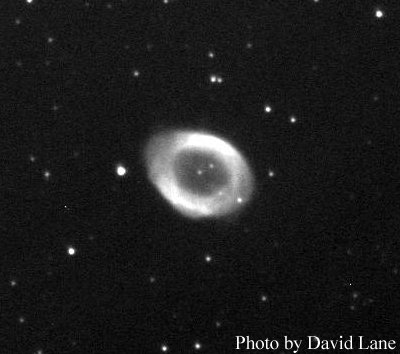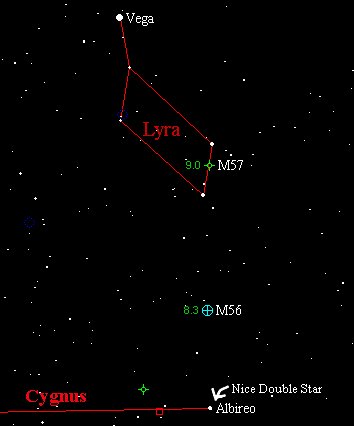

 |
 |
| The Death of a Star |

Photo By David Lane Thanks to Nova Astronomics
When a star that is close to the mass of our Sun uses up its hydrogen fuel, it goes through the various stages of swelling towards the end of it's life, then becomes a white dwarf. In the process of becoming a white dwarf the star will shed its outer layers. This outer layer, which is made mostly of hydrogen, expands around the white dwarf. The white dwarf which is basically the exposed inner is still very hot from the nuclear reactions it was going through and has temperatures hotter than the largest of stars. Though the white dwarf's size is close to that of the Earth, it puts out so much ultraviolet radiation that the expanding shell of gases glow like a neon sign. This glowing discarded shell of a dead star is called a planetary nebula. They get the name of planetary nebula because like a planet they showed up in a telescope as a disk and not a point like of a star or a diffuse blob like other types of nebula.

Now that you know something about a planetary nebula, let's go find one. In the Summer in June around 10:00 PM toward the East you should notice a very bright star, the brightest star in the Eastern part of the sky. This star is Vega and is part of the small constellation Lyra. Below Vega and to the south are four stars that make the shape of a parallelogram (squished rectangle). The two stars on the south side of this parallelogram form an imaginary line. About 1/3 of the way along this line from the western most star is M57, also called The Ring Nebula. This disk of luminous gas is small, so once you find it with low power switch to high power to see more detail. Remember you will not be able to see color with your eyes, only photographs can pick up its color.
Below (to the East) of Lyra is Cygnus or the Northern Cross with the bright star Deneb at it's top and Albireo marking the bottom of the cross. Now if you make an imaginary line between Albireo and the Eastern most star of Lyra (the same eastern most star we used to find M57). Point your scope half way between to see a Globular cluster M56.
I want to share one other treasure, and that's Albireo itself. Through a telescope you will see that it is a very beautiful double star.
Remember you will never see deep space objects as sharp and colorful as the photographs of them. What you do see as far as detail will depend upon the diameter of your objective and how dark your skies are.